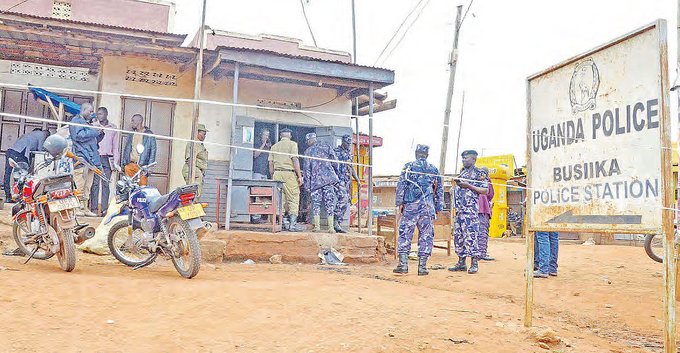The Uganda Police Force is currently implementing restructuring and re-organization of it’s forces a merger in a pilot model they say is intended to increase efficiency in the force’s services.
According to police spokesperson Fred Enanga, the key aspects of the model, would involve; the establishment of at least one police station per sub-county, deployment of not less than 20 personnel, deployment of motorcycle squads, installation of counter phones that are popularized among residents, dedicated counter response teams, critical facilities, modern lockup facilities, better accommodation and medical services.
Enanga says the sub-county policing model is premised on the need to enhance police visibility, automation of policing services through advanced technology, consolidation of the available resources and assets at the sub-county.
“During the 25th Police Council meeting, in November, 2019, H.E. The President, directed the Police to review its territorial policing doctrine, by focusing more on policing at the Sub-county level, to help increase efficiency, consistency and stronger partnership with the community at that level. As a result, the UPF conducted a study of the proposed sub-county policing model to ensure an effective policing policy, of the urban and rural areas of the community.” Enanga says in a press statement.
Enanga said Uganda Police is now piloting the practicability of the model in selected areas within the Kampala Metropolitan Policing area and in the Central Regions of Savanah, Katonga, Ssezibwa and Wamala but it’s success will lead to its full scale implementation plan to cover all 2624 sub-counties in the country.
“We want to inform our local leaders that the implementation of the model, will take a phased approach, that is determined by the available capabilities at the station of deployable personnel, logistical requirements of transport, office, residential facilities and communication facilities.’ he adds.
He notes that however there are from the local leaders and the communities in the piloted areas that the merger of forces will impair performance in the force’s local policing and locals have raised concerns of reduced police response and visibility due to distance, which may impact safety and security in their localities.
“We want to assure the public that the restructuring and reorganization is in its pilot phase. And a full spectrum of Police services to the entire sub-county, will continue to be provided in a more effective and efficient manner. The sub-county policing will handle emergencies, traffic, forensic experts, crime intelligence, and other specialized units. In addition, the merger of forces, allows for a more unified procedure of dealing with major incidents such as terrorism, domestic extremism and targeted attacks on police officers and stations, like in the recent Busiika Police station attack, where two police lives and two guns were lost. The sub-county policing model will increase capacity to counter such violent attacks and hostilities.” He said.
In the past, police has implemented the merger of forces in a strategic manner but sustained the delivery and responsiveness of policing services. At the sub-county level, the force is bigger to deliver protection, safety and security.
“Therefore, the merger of forces under the sub-county policing model, has good potential and will not necessarily lead to a decline in local policing, since the sub-county is still at a local level. We will be able to maintain community level outcomes and relationships and sustain the neighborhood policing strategies.” Enanga noted.
